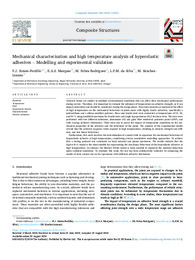Please use this identifier to cite or link to this item:
https://hdl.handle.net/11000/33442Full metadata record
| DC Field | Value | Language |
|---|---|---|
| dc.contributor.author | Simon Portillo, Francisco J. | - |
| dc.contributor.author | Marques, E.A.S. | - |
| dc.contributor.author | Fabra-Rodriguez, M. | - |
| dc.contributor.author | da Silva, L.F.M. | - |
| dc.contributor.author | Sánchez-Lozano, Miguel | - |
| dc.contributor.other | Departamentos de la UMH::Ingeniería Mecánica y Energía | es_ES |
| dc.date.accessioned | 2024-10-07T09:15:39Z | - |
| dc.date.available | 2024-10-07T09:15:39Z | - |
| dc.date.created | 2024-08 | - |
| dc.identifier.citation | Composite Structures, Volume 348, 15 November 2024 | es_ES |
| dc.identifier.issn | 0263-8223 | - |
| dc.identifier.uri | https://hdl.handle.net/11000/33442 | - |
| dc.description.abstract | Adhesive bonds are subject to multiple environmental conditions that can affect their mechanical performance during service. Therefore, it is important to evaluate the influence of temperature on adhesive strength, as it can impact joint safety and should be considered during the design phase. This study presents an analysis of the effect of high temperatures on the mechanical behaviour of joints made with highly elastic adhesives, specifically a polyurethane and a silicon-modified polymer. Shear and tensile tests were conducted at temperatures of 23, 50, and 80 ◦C using dumbbell specimens for tensile tests and single lap specimens (SLJ) for shear tests. The tests were performed with two different substrates, aluminium (Al) and glass fibre reinforced polyester panel (GRP), and with varying adhesive thicknesses. These tests aim to assess the impact of temperature conditions on the mechanical properties of the adhesive and the behaviour of the joints. The analysis of the experimental results reveals that the adhesive degrades when exposed to high temperatures, resulting in reduced strength and stiffness, and less linear behaviour. Furthermore, this work involves the determination of a model able to reproduce the mechanical behaviour of hyperelastic adhesive at high temperatures, considering diverse constitutive modelling approaches. To achieve this, a testing protocol was conducted on basic uniaxial and planar specimens. The results indicate that the Ogden N=2 model is the most suitable for representing the non-linear behaviour of the hyperelastic adhesive at high temperatures. In contrast, the Mooney Rivlin model is more suitable to represent the material behaviour under ambient conditions. To conclude this work, the law has been satisfactorily validated by comparing the results of tests carried out on SLJ specimens with different adhesive thicknesses. | es_ES |
| dc.format | application/pdf | es_ES |
| dc.format.extent | 10 | es_ES |
| dc.language.iso | eng | es_ES |
| dc.publisher | Elsevier | es_ES |
| dc.rights | info:eu-repo/semantics/openAccess | es_ES |
| dc.rights | Attribution-NonCommercial-NoDerivatives 4.0 Internacional | * |
| dc.rights.uri | http://creativecommons.org/licenses/by-nc-nd/4.0/ | * |
| dc.subject | Temperature | es_ES |
| dc.subject | FEM | es_ES |
| dc.subject | Hyperelastic Models | es_ES |
| dc.subject | Characterisation | es_ES |
| dc.subject | Flexible Adhesives | es_ES |
| dc.subject.other | CDU::6 - Ciencias aplicadas::62 - Ingeniería. Tecnología | es_ES |
| dc.title | Mechanical characterisation and high temperature analysis of hyperelastic adhesives – Modelling and experimental validation | es_ES |
| dc.type | info:eu-repo/semantics/article | es_ES |
| dc.relation.publisherversion | https://doi.org/10.1016/j.compstruct.2024.118511 | es_ES |

View/Open:
1-s2.0-S0263822324006391-main.pdf
5,04 MB
Adobe PDF
Share:
.png)
